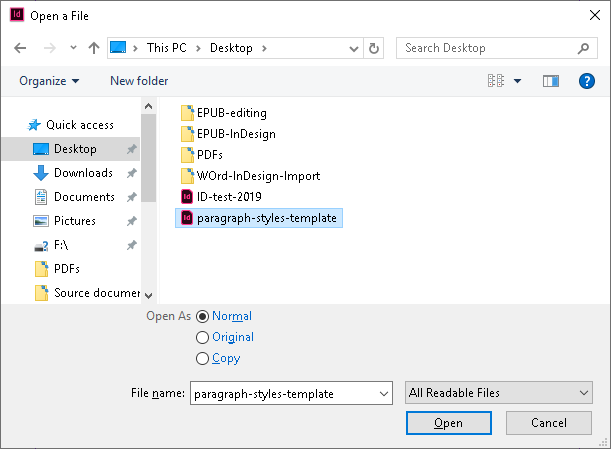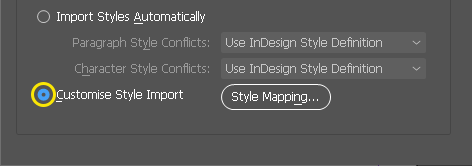27 August 2019 | Ted Page
…and improving your PDF accessibility workflows
Making sure that you add appropriate accessibility features to your Word documents is not just important for when those documents are to be exported directly to PDF. It is also vital when creating copy to be sent to graphic designers or typesetters.
If you add structural features such as alt text for images, headings, lists and tables etc, your graphic designers or typesetters can simply import them intact directly from Word into InDesign, ready to go.
Who should author your alt text?
It is of course a well-established principle that pushing any accessibility work as far up the document workflow as possible is almost always the most efficient way to work. This is especially so in the case of alt text which ideally should be created by the document author or possibly some other subject specialist. It should not be assumed that a graphic designer, or even a PDF remediation specialist for that matter, is the appropriate person to handle this aspect of the job.
Importing paragraph styles into InDesign
If you are starting an InDesign document from scratch, you will first need to create or import an appropriate set of paragraph styles. To import a pre-existing set of styles, from InDesign’s paragraph styles panel flyout menu, select Load Paragraph Styles. Navigate to the InDesign file or template containing the required styles and click Open. Click OK to complete the process.

Mapping styles to tags
Of course, your paragraph styles will also need to be mapped to tags in InDesign, in order to generate the correct tags in the final exported PDF. To do so, from InDesign’s paragraph styles panel flyout menu, select Edit All Export Tags. Select the PDF option button. In the Edit All Export Tags dialogue box, the document’s paragraph styles will be listed in the left-hand column. These can easily be mapped to headings (H1 to H6) or paragraphs (P) in the right-hand column.
…and its limitations
Unfortunately, only headings and paragraphs are available for mapping here. This restriction is in stark contrast to InDesign’s mapping functionality for EPUBs, which is fully flexible.
As an aside, it would be massively helpful if the InDesign developers at Adobe could expand the range of choices here, or alternatively restore InDesign’s original functionality so that mapping to ‘Automatic’ meant mapping to a tag with the same name as the paragraph style. Such functionality disappeared from InDesign a while back so that now mapping to Automatic actually means mapping to P (paragraph). The old functionality worked so much better.
Importing structured content from Word into InDesign
Once you have an InDesign file with an appropriate set of paragraph styles, importing structured content is straightforward. To do so:
- From the File menu select Place (or Ctrl/Cmd + D)
- In the Place dialogue box, navigate to the required Word file
- Check the Show Import Options check box and then click Open (alternatively hold Shift and click Open)

- InDesign’s Microsoft Word Import Options dialogue box now opens

- At the foot of this dialogue box, select Customise Style Import
- Click the Style Mapping button

- In the Style Mapping dialogue box, select from the list of available InDesign styles in the right-hand column to map them to the appropriate Word styles in the left-hand column
- Click OK
Note, typically you will want to map Word’s character styles in the left-hand column to ‘None’ in the right-hand column in order to avoid importing unwanted visual styling from Word.
Conclusion
Once done, you will have an InDesign file with all the main structural elements in place, including alt text for your images, leaving your graphic designers free to do what they do best. Working this way will help you enhance your organisation’s productivity—ensuring appropriate division of labour and optimal use of the available technology to streamline your document production workflows.

